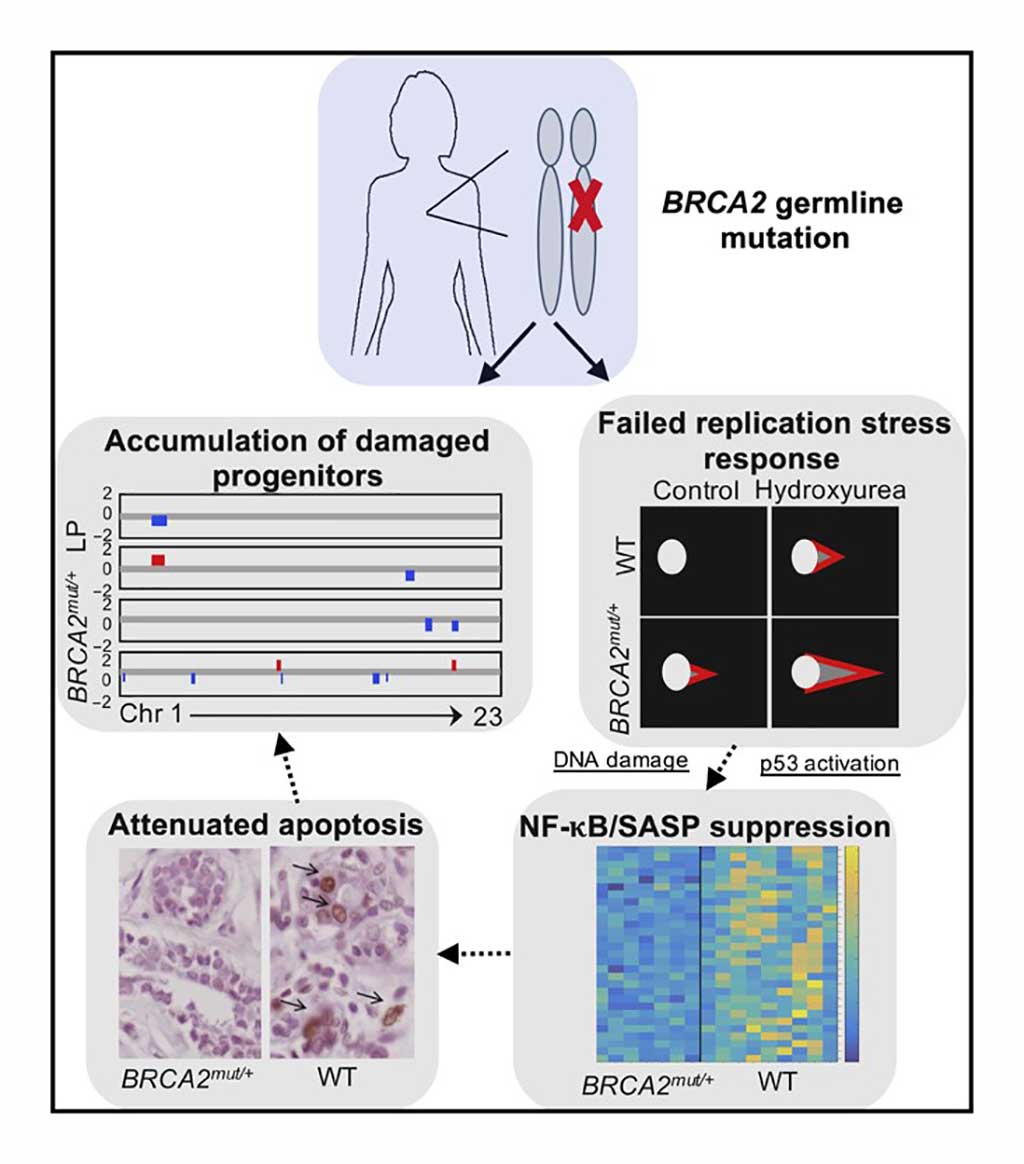Single-Cell Sequencing Identifies Breast Cancer Risk
By LabMedica International staff writers
Posted on 10 Feb 2020
Women harboring heterozygous germline mutations of BRCA2 have a 50% to 80% risk of developing breast cancer, yet the pathogenesis of these cancers is poorly understood. Breast cancers arising in women who inherit heterozygous mutations in BRCA2 are associated with a high prevalence of genomic alterations and aggressive clinical behavior.Posted on 10 Feb 2020
Because of the high risk of these cancers in BRCA2 mutation carriers, many such women elect to undergo bilateral mastectomy for breast cancer prevention. However, despite the unmet need for more effective breast cancer prevention approaches in this setting, the stepwise evolution from an otherwise normal BRCA2 heterozygous mutant (BRCA2mut/+) cell to an invasive malignancy has not been defined.

Image: Summary of findings in primary BRCA2mut/+ breast tissues: Epithelial progenitor cells of heterozygous germline BRCA2 carriers exhibit DNA damage, failed replication stress, and damage responses, together with attenuated apoptosis. Loss of heterozygosity (LOH) analyses suggests that these findings may reflect a haploinsufficient phenotype for BRCA2 in vivo (Photo courtesy of Massachusetts General Hospital).
Medical scientists from the Massachusetts General Hospital (Boston, MA, USA) performed single-cell, whole-genome sequencing on cell populations sorted from breast tissue samples from more than two-dozen BRCA2 mutation-positive women who had undergone bilateral prophylactic mastectomies. The participants had just one affected copy of the breast- and ovarian-cancer linked gene.
The teams compared genetic profiles in these breast cell populations to those from matched control individuals, and were able to track down alterations that were over-represented in the BRCA2-deficient cells. For example, with this approach, they uncovered sub-chromosomal aneuploidy in more than one-quarter of luminal progenitor cells from BRCA2 mutation carriers. In breast epithelial cells, meanwhile, the heterozygous BRCA2 changes coincided with a jump in DNA damage, along with reduced apoptotic pathway or replication checkpoint activity.
The investigators focused on heterozygous BRCA2 mutation carriers who were breast cancer-free and had no previous exposure to chemotherapy, along with control individuals matched for factors ranging from age to hormone exposure and menopausal status who donated breast tissue samples after elective breast reduction surgeries. With the help of cell marker-based flow cytometry using a FACSAria flow cytometer (Becton Dickinson, Franklin Lakes, NJ, USA) the team distinguished between mature luminal, luminal progenitor, and basal epithelial cell populations in the breast tissue samples from participants with or without BRCA2 mutations.
The scientists used single-cell genome sequencing and algorithmic analyses to identify copy number shifts and other somatic alterations in each cell type, identifying patterns supported by RNA sequencing, single-cell polymerase chain reaction (PCR), and other follow-up analyses. In samples from 26 women with BRCA2 mutations and 28 without, they also saw an apparent expansion in the proportion of luminal progenitor cells with reduced stress and DNA damage response in samples from aging BRCA2 mutation carriers.
The authors concluded that although the early genomic changes they observed were likely to include many passenger events, they nevertheless may provide a quantifiable hallmark of the preneoplastic BRCA2 carrier state. Tracking the prevalence of DNA-damaged cells in the clinical setting could possibly improve risk prediction for these women, who are faced with the difficult choice of whether to undergo mastectomy long before cancer develops. The study was published on January 29, 2020 in the journal Science Advances.
Related Links:
Massachusetts General Hospital
Becton Dickinson







 assay.jpg)





